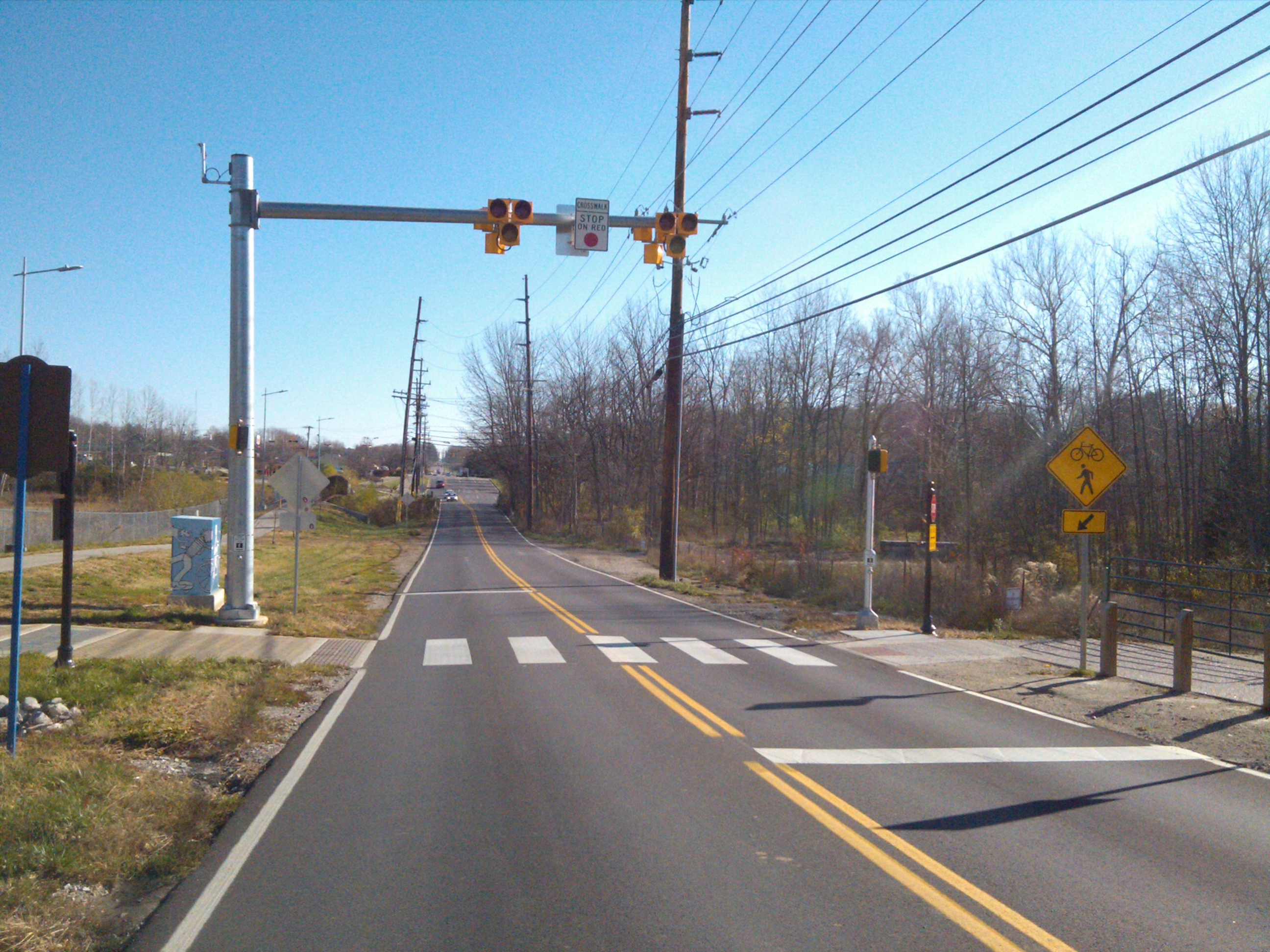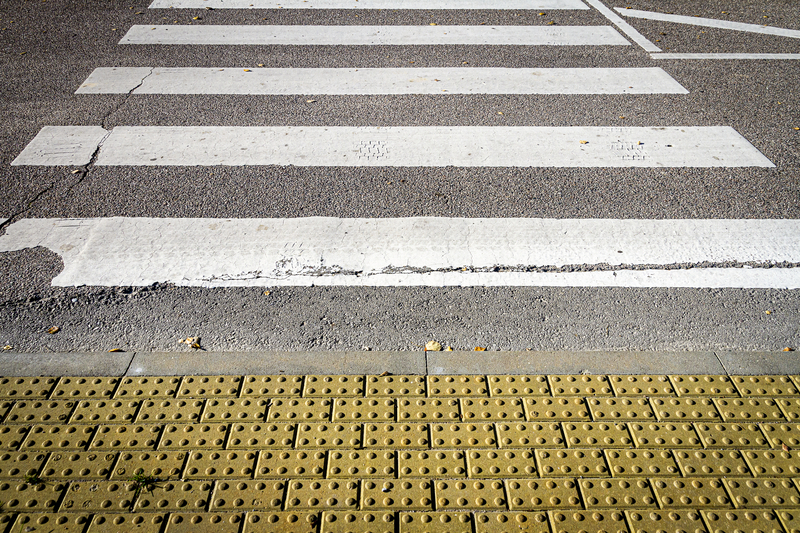
David Crawford welcomes low-cost safety initiatives for pedestrians in America.
Some 10 people die each week in accidents on crosswalks in the US, that’s more than 10% of all pedestrian fatalities in road traffic incidents - the number of which is running at a five-year high. Ensuring crosswalks are safe is key in supporting the growing enthusiasm for walking as a travel mode. In the last decade of the 20th century, numbers walking to work in the US fell by 26%; while, as recently as 2012, Americans were estimated to be making fewer than 6% of all journeys on foot. But a new wave of interest in walking as a healthy alternative travel mode is generating pressures to make it safe throughout the journey.
As a May 2014 report Dangerous by Design, produced by the US National Complete Streets Coalition, puts it: “American communities are poised for a renaissance in walking. We’re walking more often. Our most walkable places often are among the most economically vibrant in the country.
“But we are still dealing with a legacy of roadways that fail to account for the safety of people on foot.” It lists the most dangerous places to walk in the US, using a pedestrian design index based on the percentage of locals that walk to work.
Heading the roll of dishonour is the Orlando-Kissimmee metro area in Florida. The report does, however, credit the state with initiatives such as the central region’s Best Foot Forward coalition, which aims to reduce pedestrian deaths and injuries by 50% over five years.
Dangerous by Design recommends greater use of low-cost products such as pedestrian-activated rectangular rapid flashing beacons, whose lights ‘stutter flash’ in an irregular pattern similar to emergency alerts on police vehicles. The US Department of Transport’s Federal Highway Administration approves their ‘novelty’ factor in catching drivers’ attention when they are some distance away from upcoming unsignalled crosswalks on higher-speed roads.
Predictably, the Complete Streets listing shows close correlations between pedestrian vulnerability and the percentage of those commuting by foot – with a low of 1.1% in Orlando. Ranked with the sixth best pedestrian design index score is the Minneapolis/St Paul metro area in Minnesota.
The state’s Department of Transportation made a noteworthy contribution to the issue when hosting the November 2014 conference, which showcased a beauty parade of cost-effective initiatives. Janelle Borgen, ITS manager with locally-headquartered consultants WSB and Associates, reported on a pioneering installation in St Anthony Village, a first-ring suburb of Minneapolis, which is designed to cope with what she calls “natural patterns”.
The backbone of the community is Silver Lake Road. Traffic patrol observations and clearly-expressed residents’ concerns had identified an unsignalled mid-block crossing as dangerous, experiencing continuing conflicts between pedestrians and vehicles, although there is an official crosswalk at a signalled intersection nearby.
The additional crossing is positioned where it is, Borgen told ITS International, “because of the dynamics of the area”. On the western side are residential developments and a church whose parking overflows to the eastern side, where there are also a school, playing fields and the district’s city hall.
This site experiences average daily traffic flows of 9,500 vehicles, with a weekday peak-hour pedestrian count of 75 (mostly children going to/from school). Standard static signage was proving inadequate.
The solution adopted deploys pedestrian-activated LEDs around the perimeter of a static pedestrian warning sign and in-pavement along the crosswalk. According to, St Anthony city engineer Todd Hubmer: “The idea is to reduce the driver conditioning that may occur with continuous flashing lights when there are no pedestrians near.”
The deployment took three working days and cost US$53,500; US$27,000 for the equipment and US$26,500 for the installation.
The results, Borgen told the conference, include “numerous positive comments received from residents and driver compliance increased, with numbers of jaywalkers and conflicts having dropped.” Winter maintenance issues included some LEDs lifting because the pavement cracked and water entered their housings, with the subsequent freeze/thaw cycle displacing them and snowploughs scraping off their tops.
But there were no problems arising from the spring/summer electrical storms that are typical of the state’s humid climate. The city is planning a similar mid-block crossing near a shopping centre in summer 2015.
In a separate nearby installation, radar detects cars approaching at a specified speed and activates LEDs to flash around the perimeter of stop signs. Said Hubmer: “This has reduced the frequency of vehicles running through them.” Wisconsin-based traffic controls developer TAPCO supplied the radar-activated stop signs.
In another presentation, Minnesota DOT’s Jerry Kotzenmacher described the deployment of a High-intensity Activated crossWalK (HAWK) combined traffic warning and pedestrian guidance system to warn and control traffic at marked crosswalks that are positioned away from intersections. The system, like the St Anthony Village installation, is targeted at locations where formal signal warrant conditions are not met; or they have been met but the agency responsible has decided not to install the equipment.
The well-established US warrant system sets out the minimum analysis-based criteria for evaluating the case for full-scale standard traffic signal installations and offers appropriate guidelines. The results are issued by State departments of transportation and incorporated into the Manual on Uniform Traffic Control Devices, which is maintained by the FHWA.
As guidance published by the Texas DOT points out: ‘Traffic signals are one of the most restrictive forms of traffic control. The public often views them as a cure-all for problems at intersections.
‘As a result, traffic signals have often been installed where less restrictive traffic control would have been more appropriate and effective… traffic signals also have negative impacts, particularly if the signal is improperly justified or installed.”
Other factors include the installation and maintenance costs of standard traffic signals.
The HAWK alternative stays dark when no pedestrians are waiting to cross. On activation by push button, it shows the driver a flashing yellow light, followed by a solid yellow one. Solid red lights are displayed to motorists during the walking period, when the pedestrian has the benefit of a seconds-remaining countdown indicator.
As the pedestrian clears the crossing, the driver sees flashing red lights, which mean ‘proceed with caution if way ahead clear’. The signal then returns to the dark state until being reactivated by pedestrian button.
Guidelines for installation include an average count of more than 20 pedestrians in an hour and the results of a gap survey showing insufficient safe intervals during peak hours.
Ideal locations are midblock or at least 30m from an intersection. The State DOT has already installed half-a-dozen examples of the now FHWA-approved technology, and is working on establishing policy and guidelines for further installations and securing funding. Typical costs are around US$100,000.
There were early concerns that drivers would stop in any case even when the display facing them was dark, and that pedestrians would need a learning curve to become adjusted. Neither fear was realised; though some vehicles had a tendency to drive through the beginning of the red period, instead of waiting for the ‘proceed with caution’ signal; while some were confused by the latter. Further education is needed.
A third initiative involved using amber rectangular rapid flashing beacons, supplied by TAPCO at a cost of US$20,000 a time.
Study data collected from Florida, Illinois and Washington DC had shown compliance with yield signs rising from 18% before the installation to 81% afterwards.
The need arose because of a hospital expansion which caused the relocation of its employee parking and the consequent need for car users to cross a four-lane highway with a 30mph (48km/h) speed limit. In 185 crossings observed in August 2014, 82% of pedestrians used the activation button, 16% didn’t and 2% changed their minds and didn’t cross after all. Vehicles were present on 72% of these occasions and 96% of those stopped for the pedestrians.
Two problems that have arisen are pedestrian awareness, and the fact that drivers tended to halt unnecessarily at static ‘stop for pedestrians’ signs. Tom Sohrweide of engineering consultants SHE, who ran the project study, told ITS International: “Pedestrians still need to exercise caution, and drivers will become more familiar with increased use.”
The National Complete Streets Coalition is an initiative by the Smart Growth America campaign for better-quality urban and rural development. In Dangerous by Design, the Coalition urges transportation planners and engineers to work to deliver communities and streets that have the needs of all users in mind, from making streets safer to ensuring that more homes are built near public transportation. It claims that over 700 state, regional and local agencies have so far adopted its policies.










